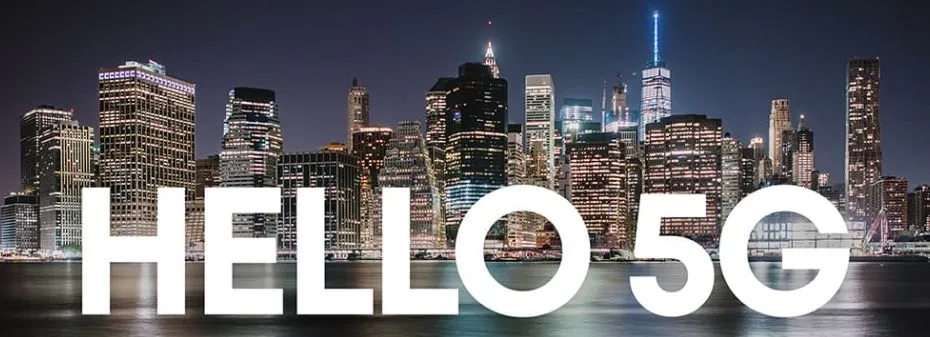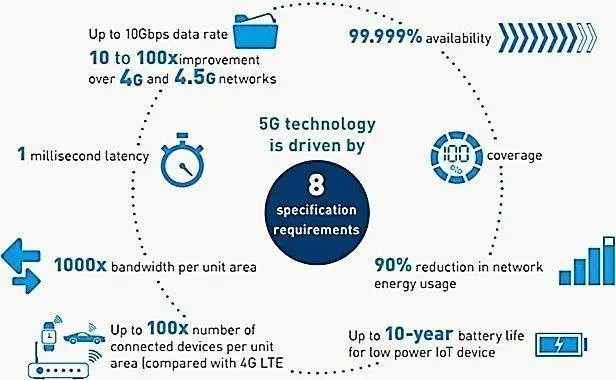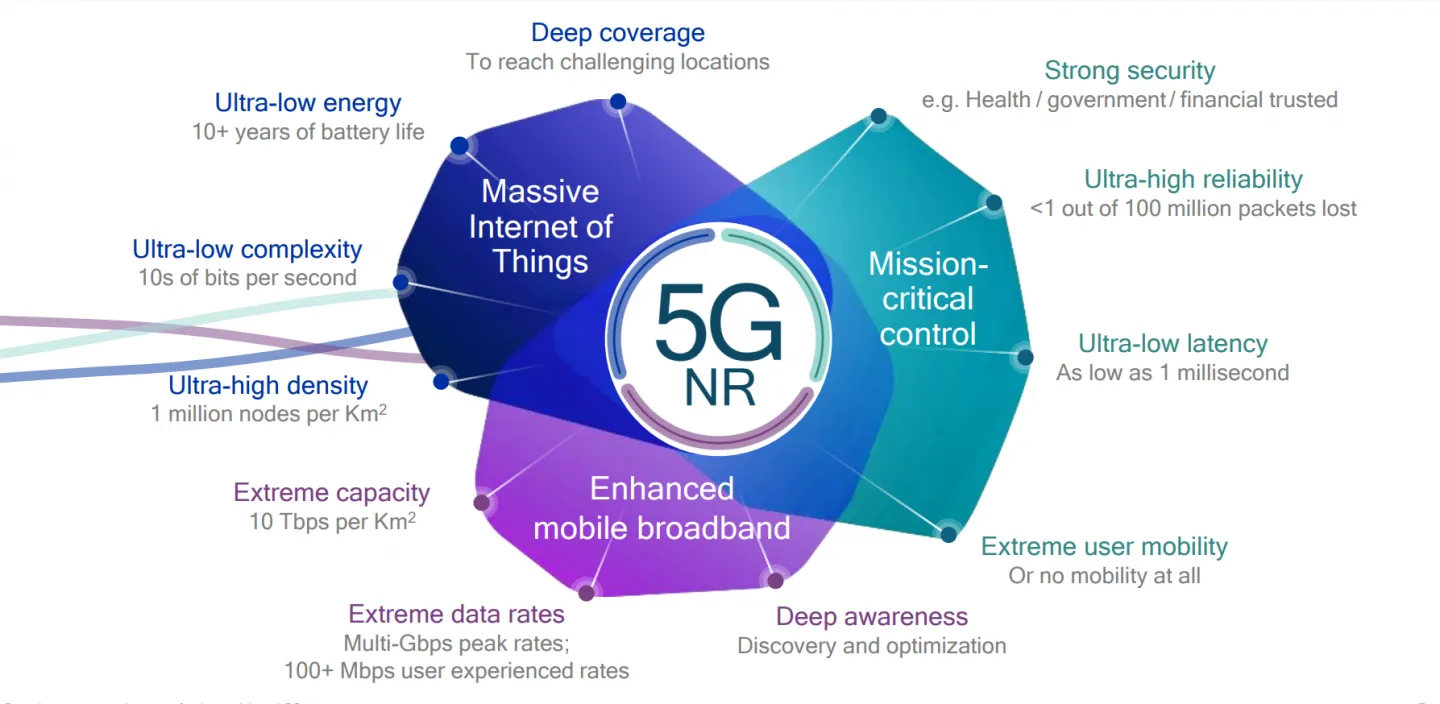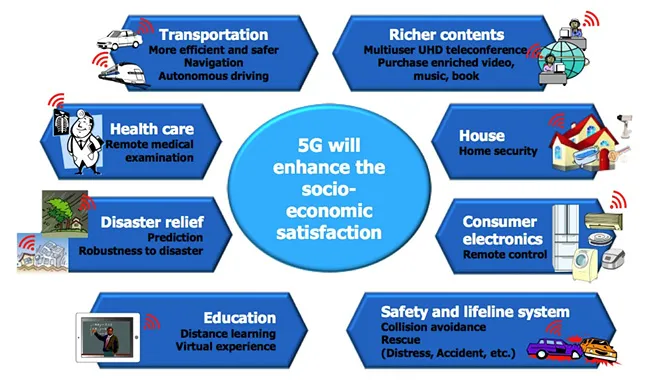
Preparing for 5G Networks: How New 5G Technology will Change the App Market

Mass use of 5G networks is predicted for 2020. The new tech era is near, and a team of the best app developet are here to offer a look at the 5G opportunities for business.
A Bit of Theory: 5G Requirements, Services and Scope
5G is the fifth generation of mobile communication network technology with a high-speed data transfer rate – several gigabits per second.
The basic outlining of the fifth generation standard from a technological point of view is currently underway. Thus, the precise definition of 5G is yet to be
In the

5G as a Universal Wireless Network
Today, data exchange between mobile devices takes place over LTE networks. We can see them as advanced technology, but the 4G network is just one of several steps into the future.
If in the case of 2G (GSM) and 3G (UMTS) telecommunication networks and data networks were considered separately, data exchange and telephone calls in the 4G network are made by sending IP packets using Voice over LTE technology.
LTE standard uses only one network – the Internet. 5G extends this idea to all wireless devices.
All of Civilisation is to be Gradually United into a Single Network
Cisco and other industry giants predict a tenfold increase in traffic used to transmit data across mobile networks over the next five years.
This isn’t just down to the growing popularity of smartphones, but also the wireless connectivity of chips and sensors of various devices to each other over the Internet, ranging from driverless cars and remote-controlled street lighting to fitness bracelets and
5G Network Project
Until recently, universities and the research divisions of Nokia, Samsung, Huawei and other manufacturers of communication network equipment have developed individual concepts that in some way fit the definition of 5G.
Earlier this year, under the auspices of the Next Generation Mobile Networks Alliance, these surveys were unified in a single project.
The project envisages the development of a single standard for 5G technology by 2020. Scales have already been defined.
5G Network Requirements

- High-speed internet access with network bandwidth over 10 Gbit / s.
5G will be able to combine hundreds of thousands of subscribers per square kilometer into a single flexible network – from the owner of a smartphone watching a film in HD resolution to energy-saving sensors transmitting just a few bits – via a variety of wireless technologies.
Thus, the smartphone will be able to switch smoothly from Bluetooth to a mobile network and then to WLAN without any human participation.
But at what frequencies will the 5G network function? Qualcomm, the production leader in chips for mobile devices, was one of the first to start working on a project called LTE-U (U – unlicensed), which is supposed to use frequencies in the 5GHz band.
Future of 5G nets: higher frequency and stability

5G networks should be allocated frequencies in the range above 5GHz, since only they can transmit data at gigabit speeds.
However, the higher the frequency, the harder it is for the signal to reach the client device without distortion. And the instability of the signal is the key point to overcome for the future.
For example, in the case of LTE technology, which uses a frequency of 800MHz, the radio antenna mast can be located a couple of
As for frequencies above 5GHz, the maximum distance from the antenna to the client device can barely exceed a few hundred
- Support for simultaneous connection of up to 100 million devices / km2.
The architecture is represented by small cells, which have long been used in conventional transmission technology for local signal amplification.
- Ultra-low latency – data transmission delay on the radio interface is no more than 1ms.
The use of high frequencies in combination with the small-cell architecture meets the requirements of future services, which depend not so much on high data transfer rates as on connection stability and response time.
An example is a driverless car on a motorway: computer-controlled road users exchange data with each other using small cells located on the side of the road.
Technology: device-2-device or D2D
This principle of “direct communication” between devices (device-2-device or D2D) is currently being implemented in the new version of the LTE standard.
Real-time data exchange at high speeds and ultra-low latency are necessary for the operation of the tactile Internet, the main research facility of the 5G laboratory of Dresden Technical University.
Here, remote control of devices is studied – from rescue robots to a remote operation performed by an ambulance doctor, with the aid of virtual reality glasses such as the Oculus Rift.
Services in 5G Networks
- Ultra-wideband mobile communications (Extreme Mobile Broadband, xMBB) – the implementation of ultra-wideband communications with the aim of transmitting "heavy" content;
- Mass Machine-Type Communications (
mMTC ) – support for the Internet of Things (ultra-narrowband communication); - Ultra-reliable machine-to-machine communication (Ultra-reliable MTC,
uMTC ) – providing a special class of services with very low latency.
Another component of the network will be the use of Network Function Virtualisation (NFV).
Traditionally, the functions of communication networks are implemented using proprietary hardware.
NFV allows you to transfer them to the software level. Thus, the number of “iron” network architectures and infrastructure elements is reduced, and the deployment of new wireless net functions and their management becomes much more efficient, more profitable and more reliable.
NFV technology is the missing piece of the puzzle that will help telecom and mobile operators to achieve this goal – to shift network function from its own system, usually isolated, to the software-defined cloud.
The combination of 5G and NFV technologies creates networks that independently
Apps of the 5G Future: Plan your Business Development Today

Our IT experts have selected several innovations that you can benefit from in the very near future.
1. 3D Virtual Reality (VR)
The advent of the 5G era means that content service providers, media and entertainment companies will be able to offer their customers any opportunities without restrictions.
- Virtual reality can fundamentally change the way we watch live sporting events. It will give viewers the opportunity to experience the effect of comprehensive immersion in the competition due to the video signal from cameras installed around the perimeter of the field, or, for example, use applications that will bring them directly into the game space.
- Telemedicine is one of the potential practical applications: for complex surgeries that can only be performed by a select few specialists, neither the surgeon nor the patient will need to go anywhere. The doctor will be able to conduct operations "over the network" using virtual reality glasses and gloves.
2. Internet of Things
Naturally, the task of a 5G network is not only to simply improve interaction with the viewer. Businesses can get much more from these technologies. 5G will serve as the foundation for using the Internet of Things and help companies to provide cost-effective identity management.
- Manufacturers will be able to embed chips in any parts of their machines while engineers will know which part needs to be repaired or replaced.
- Farmers will be able to hang sensors on livestock in order to know when animals need
treatment, or else insert them into the soil to monitor real-time data on the need for watering. - People in their homes will be able to connect refrigerators and washing machines to the Internet to determine when they need maintenance.
- Runners – connect trainers to
analyse the speed and distancetravelled . - Implants for diagnosing cardiovascular diseases can automatically send information to doctors.
All these and many other use cases have the potential to soon become a reality via mobile network services and app development based
3. Mobile Cloud Services based on Geolocation and Visual Navigation
Apps are a more extensive topic than devices for thinking about 5G. For a start, it’s worth understanding that not all apps need to work with cloud data sources.
For some highly
Simple games, industrial cases with no need to update a large base of devices and apps where it’s better to get by with local data (for example, meters or thermal imagers) are not about clouds, although developers can embed additional cloud functionality into them.
Prospects of app development with 5G networks
A permanent Internet connection is absolutely necessary for
5G will give a powerful impetus to the development of:
- Geolocation games,
utilising the AR/VR technologies; - Augmented reality information services, including various browsers and platforms for content distribution;
- Navigation – it will accelerate the development of autonomous self-driving car technology by creating a fast, versatile and stable network which the driverless car will use in order to follow the route safely;
- Local search
optimisation , ASO, and the scope oflocalised services; - Advertising, as well as trade and many other areas that are actively looking for new, not-yet-exhausted ways of reaching the consumer.
Don’t miss your chance to become a groundbreaker – start thinking about your app of the future today. But don’t rush it – such a project will require thorough planning





